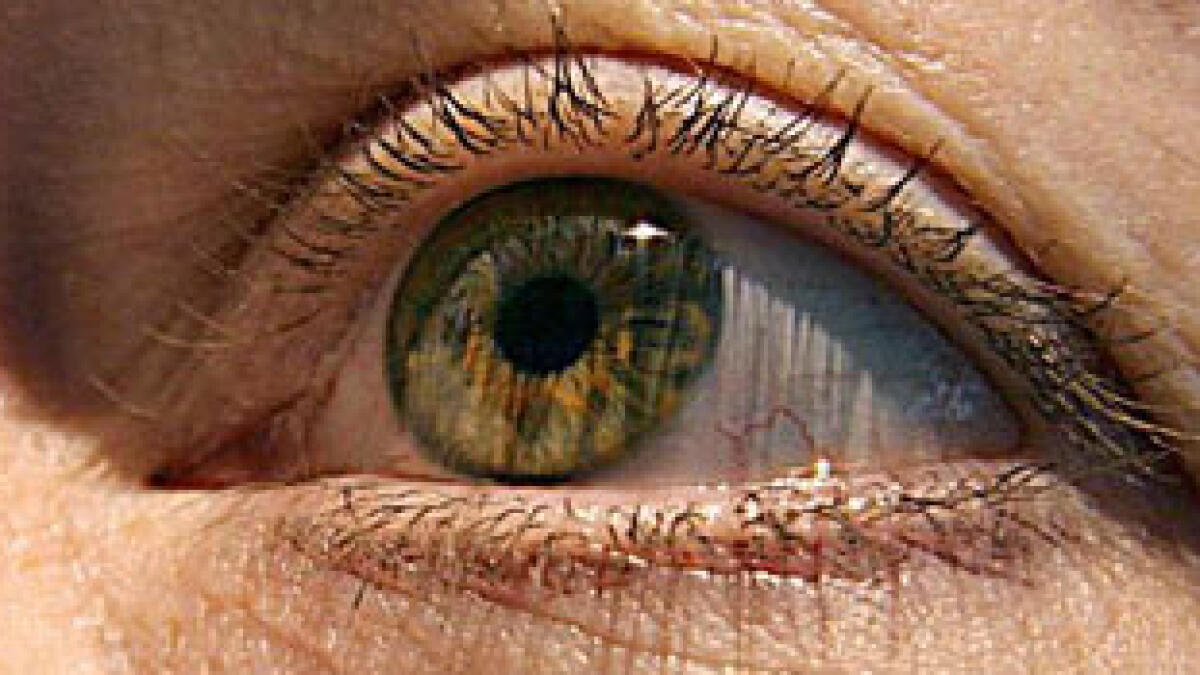The defence ministry said it intercepted 50 Ukrainian drones overnight
Abu Dhabi hospital becomes first in region to offer innovative glaucoma treatment
New technology can immediately lower eye pressure.

Three patients at Cleveland Clinic Abu Dhabi (CCAD) have become the first in the region to receive an innovative minimally invasive treatment for glaucoma, a common eye condition where the optic nerve becomes damaged because of an increased pressure caused by fluid build-up in the front part of the eye.
The new technology is able to immediately lower eye pressure and effectively treat the progressive damage that glaucoma can cause to the optic nerve, while reducing or eliminating the reliance on medication in most patients.
The new minimally invasive PreserFlo MicroShunt procedure involves inserting a small biocompatible stent into the drainage system of the eye in order to shunt intraocular fluid and lower pressure inside the eye. This procedure enables patients to quickly recover at home. Patients can generally return to normal, non-strenuous activities within a few days, and to a normal lifestyle within a few weeks.
Dr Jason A. Goldsmith, a staff physician in the Eye Institute at CCAD, who was part of the care team for these patients, noted that glaucoma is one of the main causes of vision loss in the UAE.
“The expansion of our minimally-invasive surgical options with the introduction of this novel approach to treat glaucoma means that even patients with advanced disease can be treated safely, with minimum downtime and positive results in most cases.”
Patient shares her experience
Dubai-based Canadian expat Natavan Tapdigova was among the first patients to be treated with this new technology in November. The 55-year-old began having symptoms of blurry vision and headaches in 2018, but she was diagnosed with glaucoma in 2020.
“Not once during all my annual check-ups at other hospitals was, I informed that I should get an eye test for my pain. One morning in 2020, my symptoms became worse. Unfortunately, I still waited for four weeks before I went to see an ophthalmologist,” Natavan said.

Her doctor found her eye pressure to be very high, ranging from 40-50 mm HG, which can cause rapid vision loss. She was prescribed pressure drops and pills to lower her eye pressure, but they came with several side effects, including red and itchy eyes, as well as dryness.
“Many people recommended Cleveland Clinic Abu Dhabi to me, so I decided to see Dr Goldsmith in 2020. He confirmed the diagnosis and tweaked my pressure medications to reduce the side effects. Until earlier this year, the medication was working well to maintain the pressure in both my eyes at around 15-18 mm HG,” the HR professional said.
The disease worsened, and her eye pressure could no longer be controlled with eye drops alone. Natavan’s pressures began to creep up to 30 mm HG, and it was time to consider incisional surgical options.
Incisional surgery as a last resort
The new procedure, Dr Goldsmith explained, is recommended to patients only after a thorough eligibility assessment that includes a comprehensive eye exam and imaging, and a review of their medical history.
“Incisional surgery becomes necessary when medications do not work for the patient, or if the patient is experiencing significant side effects while taking medications. We generally only recommend incisional glaucoma surgery when the patient is at significant risk of permanent vision loss without surgery, which was the case with Natavan.”
In suitable candidates, the new procedure is performed under a local anaesthetic and takes about 30 to 45 minutes, after which the patient is observed for a few hours in the clinic and discharged on the same day. The patient is prescribed postoperative eye drops, with a follow-up visit scheduled for the next day to assess the success of the operation.
ALSO READ:
Natavan, who had the treatment in both eyes, no longer has any symptoms, is completely off her glaucoma eye drops, and her pressure has dropped to about 12 mm HG in each eye.
“Since this was an eye procedure, I was really worried at first. But it was such a simple procedure at the end and my discomfort after the surgery lasted only a few days, and my pressure has reduced significantly. I am only taking post-surgery medication now.”
More news from
Media reports had suggested the trip would begin as soon as Sunday and last two days
Visitors can enjoy movies with family favourites, including ‘The Jungle Book’, ‘Jumanji’ and ‘Zootopia’ to match the wild theme every evening from 8pm
Sheikh Mohamed conveyed his congratulations to all eight honourees, recognising their inspiring efforts and significant contributions in service to society
His father thanked everyone who participated in the search mission despite the challenges posed by flooding in various parts of the emirate
It will be humid by night and Sunday morning with a probability of mist formation over some coastal and internal areas
Nearly 6,000 volunteers linked to a single support group are working tirelessly across the country to help those affected
Real estate developer MAG pledges to cover all the costs of necessary repairs for affected residents











